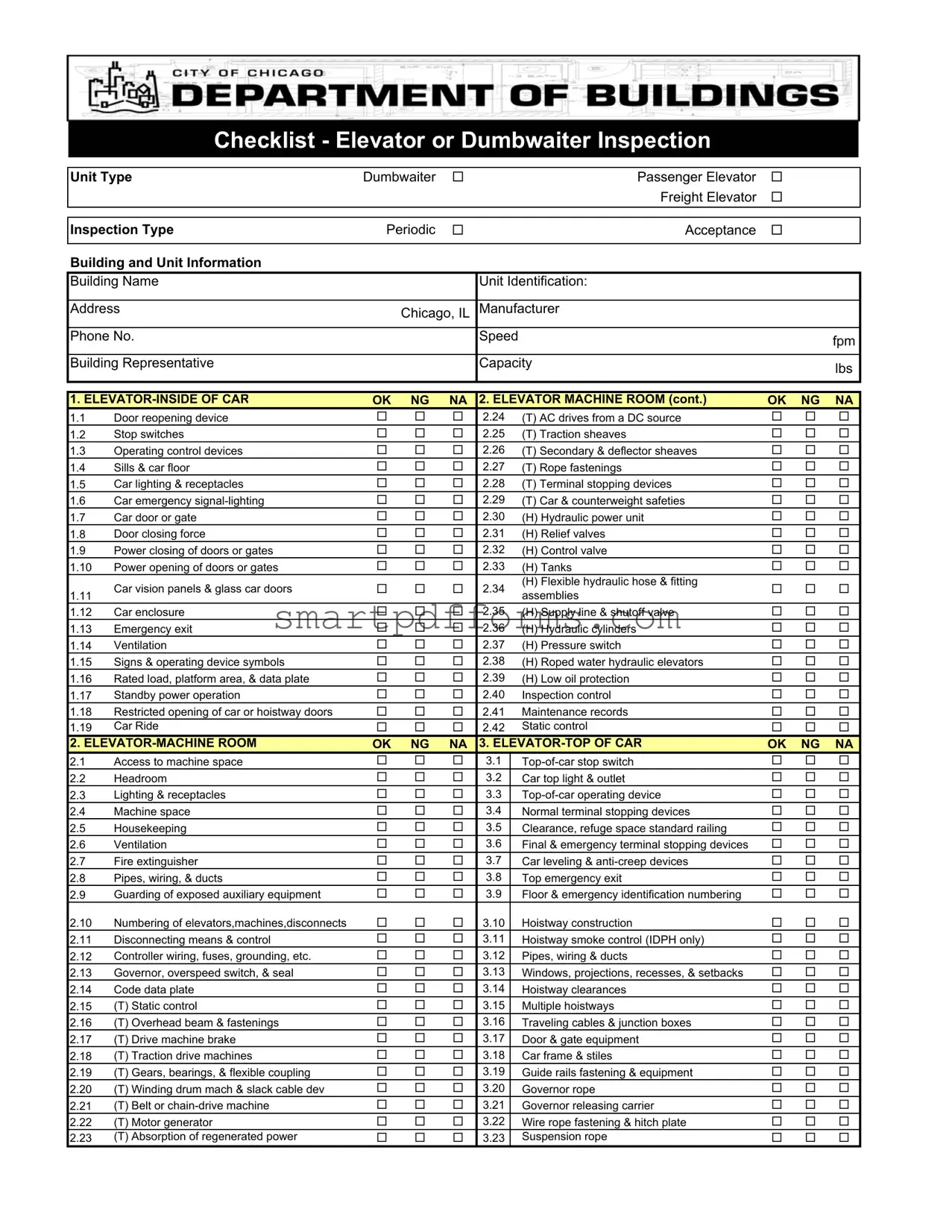Ensuring the safety and operational efficiency of elevators and dumbwaiters is paramount, necessitating a comprehensive inspection process guided by a meticulously structured Elevator Inspection Checklist. This essential document addresses a wide array of elements, including distinct unit types such as passenger elevators, freight elevators, and dumbwaiters, alongside specifying whether the inspection is periodic or for acceptance purposes. Key information about the building and unit, such as the building name, unit identification, and manufacturer details, are integral parts of the form, ensuring a tailored inspection approach to each unique setup. The checklist delves into various inspection aspects covering the inside of the car, machine room, top of the car, outside the hoistway, and the elevator pit, categorically listing critical elements such as door reopening devices, car lighting, emergency exits, ventilation, and many more. Each item is subject to an evaluation marked as OK, NG (No Good), or NA (Not Applicable), indicating the condition and compliance of each component with established standards. Special notations for traction and hydraulic elevator specific items are included, highlighting the nuanced differences in inspection criteria based on elevator type. Traction elevators, for instance, are scrutinized for components like traction sheaves and rope fastenings, while hydraulic elevators are checked for elements like hydraulic power units and relief valves. Moreover, the form allows inspectors to note the inspection status, the inspection company's details, and any pertinent comments regarding the items checked, making it an indispensable tool for ensuring elevator safety and regulatory compliance.

